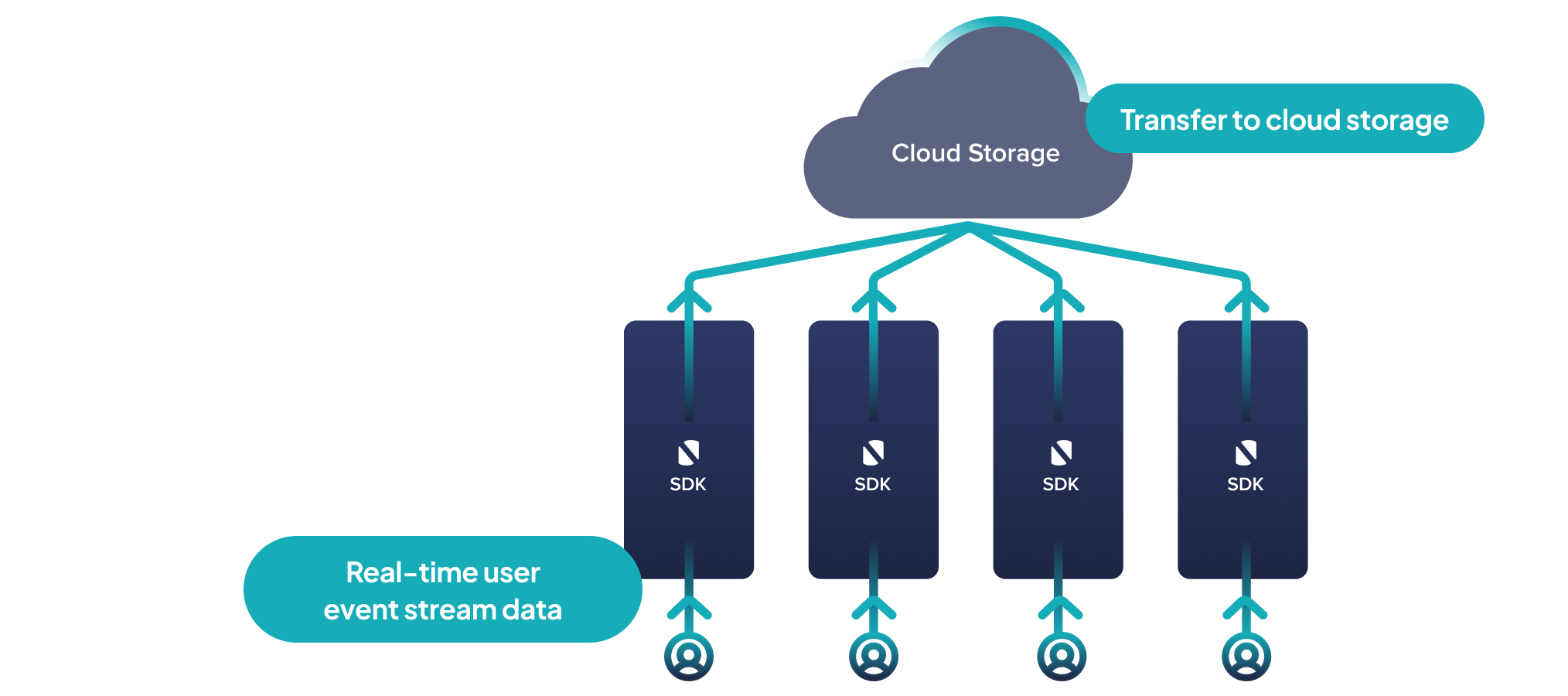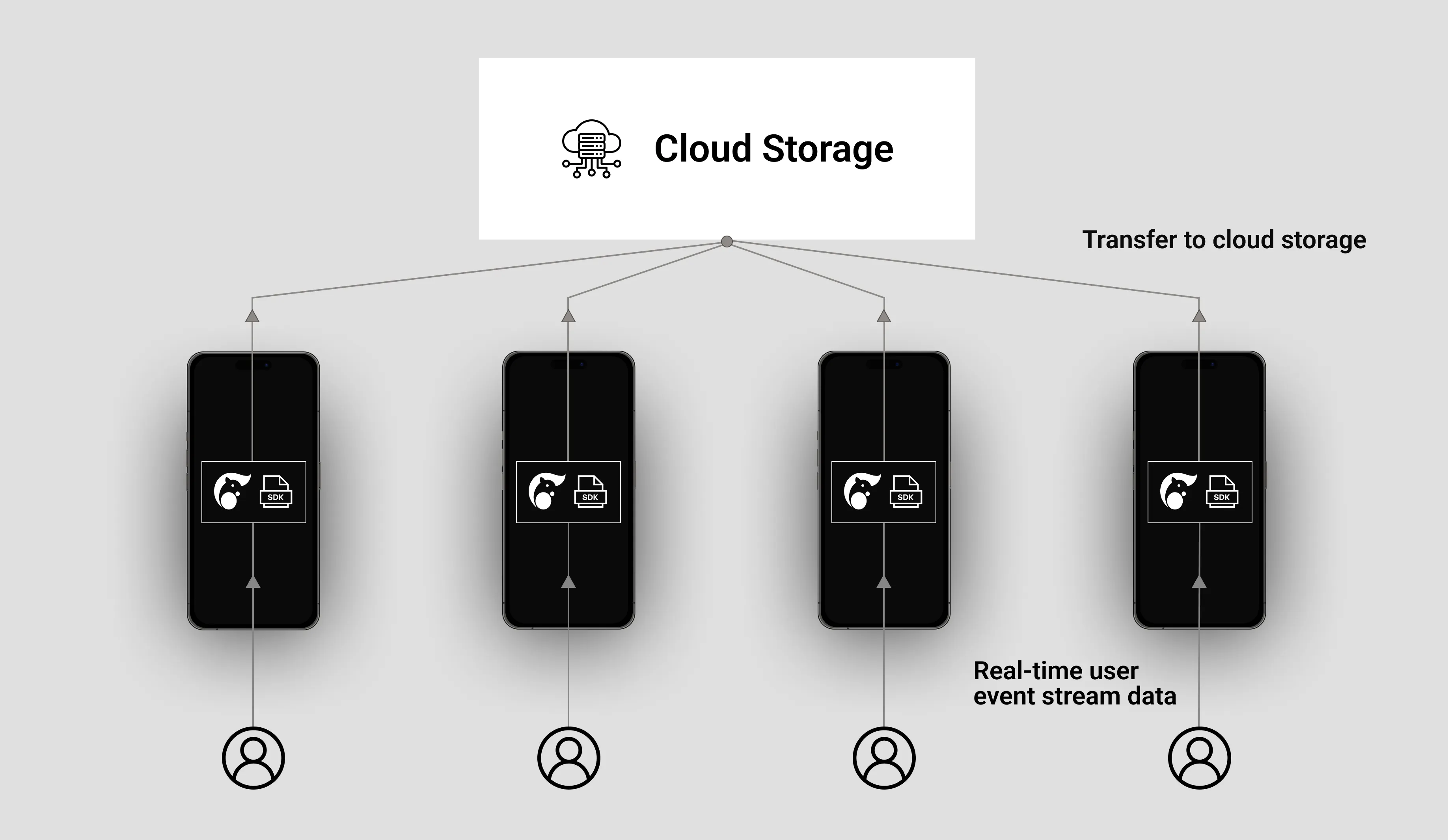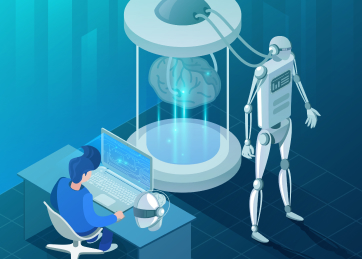How NimbleEdge enables on-device event stream capture to power session-aware AI


Mobile apps across verticals today offer a staggering variety of choices - thousands of titles on OTT apps, hundreds of restaurants on food delivery apps, and dozens of hotels on travel booking apps. While this abundance should be a source of great convenience for users, the width of assortments itself is driving significant choice paralysis for users, contributing to low conversion and high customer churn for apps.
Many apps have turned to user experience personalization to tackle this challenge, delivering personalized listings in app homepage, search results and recommendations, based on the customer’s historical preferences. This approach has been partially successful, but most enterprises only rely on outdated, historical customer data for personalization, missing out on rich insights from real-time user interactions that more accurately indicate a user’s immediate intent.
That is where session-aware personalization comes in. Session-aware personalization leverages users’ real-time, in-session interactions (e.g. clicks, search queries, cart additions) to understand their current intent, and accordingly tailor their app experience. Leading apps like Netflix, Instacart, and Alibaba’s Taobao have deployed such systems, driving strong conversion and engagement benefits. At NimbleEdge, we take this further by enabling session-aware personalized experiences directly on users’ mobile devices using our on-device AI platform, making real-time personalization efficient and endlessly scalable.
Session-aware personalization is performed using AI/ML models that take the user’s real-time clickstream data as input, and return e.g. personalized rankings as output, that form the basis for real-time tailored user experiences (e.g. top search results for a query, top items to display on a user’s homepage feed). Naturally, creating such models is the first step towards enabling session-aware personalization, with these models then deployed and executed on users’ mobile devices using NimbleEdge.
Building such a model involves several challenges, which make session-aware modeling a highly time and resource-intensive effort:
In the next section, we explore how existing tools for clickstream data collection can exacerbate these challenges, often falling short in flexibility and customization.
We’ve already established that creating large, accurate, clickstream datasets is essential for building session-aware personalization models. We’ll now shift our attention to a popular current approach for data collection (i.e. using CDPs), and associated challenges.
Customer Data Platforms (CDPs), such as Segment, Amperity, and Clevertap consolidate and organize data from various sources to create unified user profiles. They integrate with customers’ apps, website, CRM software and marketing automation tools, and keep a record of users’ demographic data, marketing campaign data, as well as behavioral data, such as product-user interactions. This data is then primarily used to inform customer segmentation, personalization, and analytics for marketing campaigns.
Given the nature of focus use-cases, the users and buyers of these platforms are usually marketing teams. While CDPs collect clickstream data that is valuable for ML engineers, they are not purpose-built to support session-aware modeling, leading to several major challenges when leveraging CDPs for this task:
To illustrate these challenges, we share a quote below by the VP of AI and Data Science at a leading food delivery app, highlighting why they have struggled to use clickstream data from their CDP for session-aware modeling use-cases.

Given our focus on session-aware personalization, NimbleEdge offers an on-device data warehouse that can help circumvent the challenges associated with clickstream data collection from CDPs. This on-device data warehouse captures and securely stores real-time user interactions directly on their own devices. These interactions, such as clicks, search queries, and cart additions, can then be seamlessly transferred to cloud storage of your choice, and easily leveraged for training session-aware models.
Purpose-built for ML engineers, this solution enables ML teams to quickly collect requisite clickstream data with high accuracy, while eliminating costs of transferring data to cloud storage associated with CDPs.
In the diagram below, we share a high-level overview of how this system operates:

NimbleEdge’s on-device data warehouse unlocks ML teams’ ability to collect user event stream data at scale, unlocking the following key benefits:
Lower data transfer costs: With NimbleEdge’s on-device data warehouse enabling direct transfer of event stream data from end-user devices to cloud storage, ML engineers can eliminate the data transfer costs typically incurred when using CDPs
Control on data format: ML teams can select the user event stream data points they want to ingest using the NimbleEdge SaaS platform, providing flexibility in terms of data collection, as well as minimizing time required for pre-processing collected data to bring it into a format suitable for further analysis
Faster time to market: With simplified user event stream data collection in the requisite formats, ML teams can train session-aware models faster, as well as iterate quicker, cutting down the time to deployment
This enhancement reinforces NimbleEdge’s commitment to delivering efficient, cost-effective, and scalable solutions for session-aware personalization, even in the most demanding data environments.
To learn more about how NimbleEdge drives real-time AI-driven personalized experiences at scale, visit nimbleedge.com or reach out to support@nimbleedge.com

Critical use cases served by on-device AI across industries

Discover how NimbleEdge integrates with Google’s Gemini Nano to bring blazing-fast, private, on-device AI experiences. Explore the future of local LLMs and on-device intelligence.

On-Device AI models that understand your users in real-time